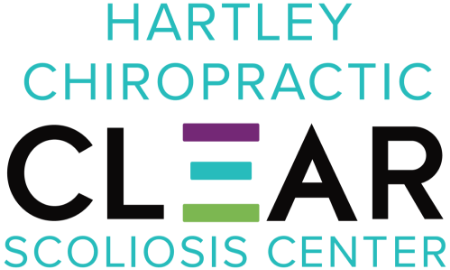There are two main scoliosis treatment approaches for patients to choose between: traditional and conservative. The former tends to funnel patients towards spinal fusion surgery, while the latter can help patients avoid the need for spinal fusion through proactive treatment applied as close to the time of diagnosis as possible.
Scoliosis surgery, aka spinal fusion, involves fusing the curve’s most-tilted vertebrae together into one solid bone; when successful, this can prevent further progression. However, the procedure can come with some serious risks and side effects, and there is a less-invasive conservative treatment option available.
Before getting into the details, risks, and alternatives of scoliosis surgery, let’s briefly explore what’s happening inside the body of a person with scoliosis.
Being Diagnosed with Scoliosis
In order to reach a scoliosis diagnosis, certain condition parameters have to be met; having scoliosis means an unnatural sideways spinal curve, with rotation, has developed.
The rotational component means a scoliotic spine doesn’t just bend unnaturally to the side, but also twists from front to back, back to front: making it a 3-dimensional condition.
The spine’s natural and healthy curves make it stronger, more flexible, and facilitate its absorption/distribution of mechanical stress incurred during movement, so in order for the spine to function optimally, it has to maintain its natural and healthy curves.
The spine is made up of vertebrae (bones) stacked on top of one another in a straight and neutral alignment; when scoliosis comes into play, this means one or more vertebrae have become misaligned as a natural curve is lost and replaced by an unnatural one.
Following a scoliosis diagnosis, the most important decision moving forward is how to treat it, and this is because different scoliosis treatment approaches offer patients different potential outcomes.
Scoliosis Treatment Approaches
Scoliosis is a progressive condition, meaning it’s in its very nature to worsen over time, particularly if left untreated, or not treated proactively.
There are two main scoliosis treatment approaches: traditional and conservative.
The traditional approach has the end goal of stopping the condition from progressing, often through surgery, while the conservative approach works towards corrective results on a structural level, in the form of a curvature reduction.
So for those on the path of traditional scoliosis treatment, it’s important to understand that this approach is more reactive than proactive, meaning when a condition is first diagnosed, particularly if mild, the common response is to watch and wait for signs of further progression.
The issue with this response is that as a progressive condition, we know that virtually all scoliosis cases are going to progress at some point, and in the condition’s most-prevalent form, adolescent idiopathic scoliosis (AIS), diagnosed between the ages of 10 and 18, these patients are at risk for rapid-phase progression.
While we don’t fully understand AIS in terms of its etiology, we most certainly know how to treat it, and understand its main trigger for progression: growth and development.
For a teen diagnosed with mild scoliosis and undergoing traditional treatment, they are commonly told to return for assessment at periodic intervals.
Depending on the doctor, those intervals can range from every 3, 6, to 12 months, but in the meantime, due to puberty, patients can experience significant progression alongside a significant growth spurt.
Now, if a scoliotic curve has been allowed to progress unimpeded, rather than being proactively treated while the curve is at its smallest, most responsive, most flexible, and before the body has had time to adjust to its presence, valuable treatment time has been wasted.
While early detection can’t guarantee treatment success, it does increase its chances, but only if proactive treatment is applied in response to the diagnosis.
So for those getting traditional scoliosis treatment, when does surgery enter the picture?
What Degree of Scoliosis Surgery Requires Surgery?
As mentioned earlier, scoliosis is progressive, meaning where a patient’s scoliosis is at the time of diagnosis, is not indicative of where it will stay.
Scoliosis can range from mild to moderate and severe, and this classification is reached through a measurement known as Cobb angle.
While each case is unique, in general, traditional treatment starts with watching and waiting, then if a condition progresses into the moderate stage, or is diagnosed as such, with signs of continued progression, a scoliosis brace may be prescribed.
Traditional scoliosis braces, however, such as the Boston brace, are limited in their efficacy as they only address the condition as 2-dimensional, and have a number of shortcomings related to their mass-produced design.
If a patient shows continued progression despite wearing a brace, and crosses over into that severe classification with continued signs of progression, patients can be presented with spinal fusion as the best, or only, remaining treatment option.
While all surgeries come with their share of risks, and spinal surgeons have their patients’ best interests at heart, spinal fusion can be a costly, lengthy, and invasive procedure that should be carefully considered.
The severe classification involves patients with a Cobb angle measurement of 40+ degrees, and while spinal surgery might not necessarily be required at this point (as you’ll read about shortly, there is another treatment option available), under the traditional approach, continued progression past 40+ degrees is when patients are often funneled towards scoliosis surgery.
Scoliosis Surgery Cost
There is no flat rate for scoliosis surgery; this is because each patient’s condition is as unique as the patient themselves, and important factors such as patient age and overall health, curvature location, condition type and severity shape a patient’s experience of life with the condition, along with how it responds to treatment.
There are numerous variables that factor into how much scoliosis surgery will cost, and for our current purposes, we’re focusing on spinal fusions performed in the United States.
Some of these variables include individual surgeon fees, condition severity, whether or not there are complications, procedure length (averages 4 to 6 hours), the amount of recovery time spent in hospital, type of hardware used, bone graft costs, etc.
On average, a patient can expect to pay around $126,000 for scoliosis surgery, but again, this is an average estimate, with multiple factors capable of causing those numbers to fluctuate in either direction.
While cost can be a determining factor for many patients, and their families, I caution that there can also be significant non-monetary costs associated with scoliosis surgery and life with a fused spine.
Scoliosis Surgery Recovery and Risks
While there are different types of spinal fusion, the procedure generally involves fusing the most-tilted vertebrae at the apex of the scoliotic curve together into one solid bone, and rods are attached to the spine with screws to hold the spine in place.
As the vertebrae at the apex of the curve are fused together, this can stop progression (spine from bending unnaturally), but when successful, it does this by limiting movement in the area, which can lead to a common side effect many patients are disappointed with: reduced spinal flexibility and range of motion.
Reduced spinal flexibility can lead to increased pain levels, not being able to participate in once-loved activities, increased risk of spinal injury, and the psychological impact of living with a fused spine (fear of trying new activities).
Additional risks of the procedure itself include infection, excessive blood loss, nerve damage, hardware failure, adverse hardware reaction, etc.
In addition, many patients undergo the procedure for cosmetic reasons, thinking surgery is the only way to return their body to its pre-scoliosis state, but surgery is limited in that regard and often can’t reverse all postural deviations associated with scoliosis, particularly in the hips.
When it comes to recovery time, again, this factor is highly case-specific, and will involve pain management and activity restrictions (bending, twisting, lifting) while the fusion site continues to heal.
On average, barring any complications, patients can expect to remain in hospital for up to seven days, with periodic assessments starting two weeks post-surgery.
In many cases, patients with sedentary jobs can expect to return two to four weeks following the surgery, but continued activity restrictions are likely until cleared by the care provider.
For those choosing to forgo a scoliosis surgery recommendation, or who simply want to try a less-invasive treatment option first, there is another option available: conservative chiropractic-centered treatment.
Scoliosis Surgery Alternatives
While the traditional scoliosis treatment approach has been in place for many years, it has changed very little over those years, despite our evolving understanding of the condition and how it responds to different forms of treatment.
Here at the CLEAR Scoliosis Institute, we value proactive treatment initiated as close to the time of diagnosis as possible.
Through a conservative chiropractic-centered scoliosis treatment approach that strives to preserve the spine’s natural function, multiple condition-specific forms of treatment are applied in an effort to prevent patients progressing past that surgical-level threshold in the future.
As a CLEAR-certified scoliosis chiropractor, I combine chiropractic care, corrective bracing, and a variety of therapies so each and every treatment plan can be fully customized to address important patient/condition variables.
As a structural condition, scoliosis has to, first and foremost, be impacted on a structural level, and through a series of gentle and precise chiropractic adjustments, I can work towards manipulating vertebral bodies (bones of the spine) back into alignment with the rest of the spine; this is considered a corrective result as the spine’s natural function is preserved, versus merely holding the spine in a corrective position through artificial means (rods and screws).
Corrective bracing, such as the ScoliBrace, represents the culmination of what we have learned about scoliosis and bracing efficacy over the years, addressing many of the shortfalls associated with traditional bracing; the ScoliBrace is custom-designed, making compliance more likely, and addresses the condition’s true 3-dimensional nature.
Physical therapy involves the use of scoliosis-specific exercises that can help strengthen the spine and its surrounding muscles for optimal spinal support/stabilization, and can also activate certain areas of the brain to facilitate postural remodeling and optimal body positioning.
Conclusion
As a CLEAR-certified scoliosis chiropractor, I want patients, and their families, to make an informed decision regarding their scoliosis treatment because that choice can have far-reaching consequences, particularly in terms of spinal health and function.
There is more than one treatment option available, and as each offers patients a different potential outcome, it’s crucial that patient expectations are aligned with the realities of those outcomes.
While scoliosis surgery has its place, it does come with its share of risks, including a reduced range of motion, pain at the fusion site, and increased risk of spinal injury.
For those choosing to opt for a less-invasive treatment option, the CLEAR Scoliosis Institute provides patients with an alternative: proactive treatment that can help patients avoid progressing to the point of reaching that surgical recommendation, while preserving the spine’s overall health and function.

